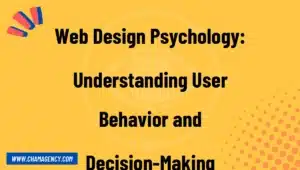In today’s digital age, creating a website goes beyond aesthetics and functionality. It is important to consider the emotional impact and understanding that the website elicits from its users. This approach, known as empathy-driven design, allows websites to connect with their users on a deeper level by tapping into their emotions and providing a personalized experience. In this article, we will explore the concept of empathy-driven design and how it can be implemented to create websites that truly resonate with users.
Understanding Empathy-Driven Design
Empathy-driven design is a user-centered approach that focuses on creating websites that evoke emotions and address the needs and desires of the target audience. It involves understanding the users’ perspectives, emotions, and motivations, and translating these insights into the design and functionality of the website. By incorporating empathy into the design process, websites become more relatable, engaging, and meaningful to users.
Empathy-driven design starts with user research and analysis. It involves conducting surveys, interviews, and usability tests to gain a deeper understanding of the users’ preferences, pain points, and aspirations. This information is then used to inform the design decisions, such as color schemes, typography, imagery, and user interactions.
The Role of Emotional Design
A key aspect of empathy-driven design is emotional design. Emotional design refers to the intentional integration of design elements that elicit emotional responses from users. This can include the use of captivating visuals, compelling storytelling, and interactive features that evoke specific emotions, such as joy, trust, or excitement.
For example, an e-commerce website selling eco-friendly products might use cheerful colors and imagery to create a sense of happiness and positivity. By aligning the emotional experience with the website’s purpose, users are more likely to feel connected to the brand and develop a sense of loyalty.
Implementing Empathy-Driven Design
Implementing empathy-driven design involves several key considerations.
User Personas
Developing user personas is essential to understanding the target audience and their needs. User personas are fictional representations of different user types and help designers empathize with their goals, preferences, and pain points. By considering these personas throughout the design process, websites can be tailored to meet the unique needs of various user segments.
User Journey Mapping
User journey mapping is a technique that visualizes the user’s interaction with the website from the initial visit to the desired outcome, such as making a purchase or submitting a contact form. By mapping out these journeys, designers can identify pain points and opportunities for improvement, ultimately enhancing the user experience.
Usability Testing
Usability testing involves observing users as they interact with the website and gathering their feedback. This helps identify areas where users may struggle or become frustrated. By incorporating user feedback into the design process, websites can be refined to better meet the needs of the target audience.
The Benefits of Empathy-Driven Design
Embracing empathy-driven design offers several benefits for website owners and users alike.
Enhanced User Experience
Websites designed with empathy provide a seamless and enjoyable user experience. By understanding users’ emotions, preferences, and pain points, websites can deliver content, features, and navigation that resonate with users on a personal level. This leads to increased satisfaction, engagement, and ultimately, conversions.
Building Trust and Loyalty
Empathy-driven design helps build trust and loyalty with users. When users feel understood and valued, they develop a stronger connection to the brand. Websites that prioritize empathy foster long-term relationships with their users, leading to repeat visits, referrals, and positive reviews.
Competitive Advantage
With countless websites vying for users’ attention, differentiation is crucial. Empathy-driven design sets websites apart by creating an emotional connection that competitors may lack. Websites that successfully implement empathy-driven design can position themselves as leaders in their industry and gain a competitive edge.
Conclusion
Incorporating empathy-driven design into website creation is the key to building meaningful connections with users in today’s digital landscape. By understanding users’ emotions, needs, and aspirations, websites can provide tailored experiences that truly resonate. Through user research, emotional design, and user-centered approaches, empathy-driven design enhances the overall user experience, builds trust and loyalty, and offers a competitive advantage. By prioritizing empathy, websites can foster deeper connections and engagement, leading to long-term success.









